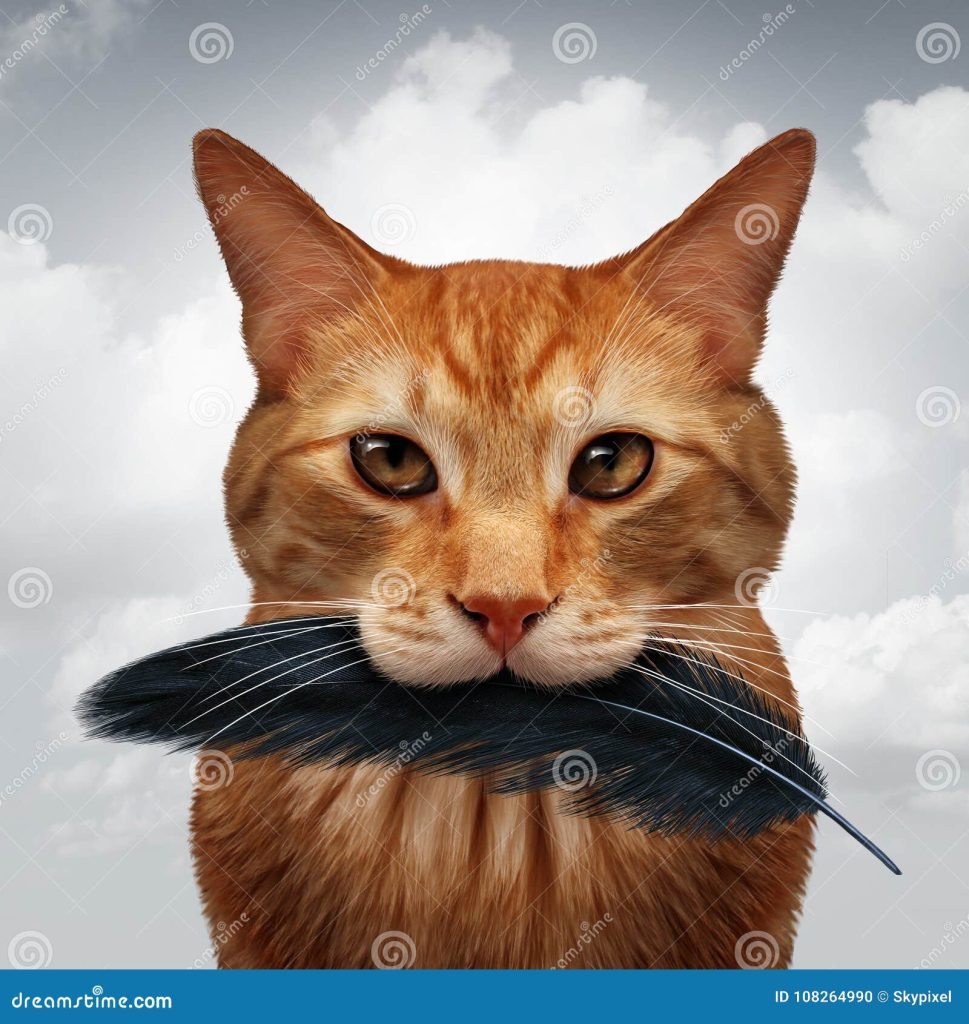Hunting Behavior in Cats: Understanding the Natural Instincts of Domestic Felines

Exploring the Fascinating Hunting Instincts of Cats
The complexities of our feline friends extend far beyond their cuddly appearances and playful antics. A prominent feature of their behavior is their hunting instinct, a deeply rooted characteristic inherited from their wild ancestors. Regardless of whether they roam freely outdoors or reside comfortably within our homes, these instincts demonstrate themselves in captivating ways, illustrating a world more intricate than many might recognize.
Stalking and Pouncing
One of the hallmark behaviors of domestic cats is their unique approach to stalking prey. Observing a cat as it crouches low, eyes intent and ears perked, is a window into the predatory skills that have been honed over thousands of years. Cats often employ various techniques to ensure a successful hunt, such as moving with stealth and precision. This behavior is not just a facet of their survival tactics; it serves as a form of exercise and mental engagement, keeping them agile and alert.
Play as Practice
Kittens possess an innate drive to practice their hunting skills through play. Those adorable pouncing sessions on a scratch post or the frenzied chase of a feathered toy are more than entertaining antics; they are critical drills meant to fine-tune their predatory prowess. Through these playful activities, young cats learn how to calculate distance, time their attacks, and develop their physical coordination. This skill-building phase is essential for their eventual prowess as adult hunters.
Predatory Actions: The Quick Burst of Speed
While observing a cat in action, you’ll likely notice a sequence of behaviors that echo their wild counterparts. Quick bursts of speed and sudden changes in direction mimic the movements necessary for catching fast-moving prey. The crouching position demonstrated before a leap is symbolic of the patience and strategy often required in the wild. Even in a safe home setting, these actions are vital for a cat’s well-being, providing physical activity to counteract lethargy.
Factors Influencing Hunting Behavior
Several factors can influence a cat’s hunting behavior, further deepening our understanding of these creatures:

- Environment: Cats that are allowed to explore outdoors often display more pronounced hunting behaviors, from climbing trees to stalking birds. In contrast, indoor cats may redirect their instincts toward toys or smaller, household items.
- Age: Younger cats tend to exhibit greater energy and curiosity, leading them to partake in more dynamic playtime, while older cats may prefer slower, more strategic engagements.
- Breed: Certain breeds, such as Abyssinians and Bengals, are known for their more pronounced hunting instincts due to their active nature, whereas breeds like Persians may prefer a more relaxed approach.
Understanding the hunting behaviors of cats not only enriches our knowledge of these fascinating animals but also allows us to foster a more meaningful connection with them. By providing adequate opportunities for engagement and activity, we can help our feline companions thrive in both body and spirit. This exploration into the intricacies of feline life opens the door to appreciate their complex nature further. So, the next time you watch your cat intently focused on a seemingly mundane object, remember that it might just be revisiting the ancient rituals of its ancestors!
DON’T MISS OUT: Click here to discover the importance of pet nutrition
The Intricate Dance of Hunting: A Closer Look at Feline Movement
Diving deeper into the hunting antics of our domestic cats, one cannot overlook the significance of movement and reflexes that define their predatory prowess. Cats are equipped with an unparalleled agility that serves as a testament to their hunters’ lineage. Their anatomy is uniquely designed for stealth and speed, which are critical for effectively stalking and capturing prey in the wild. From their retractable claws to their sensitive whiskers, every aspect of a cat’s physicality plays a crucial role in its hunting behavior.
Camouflaging and the Element of Surprise
The importance of camouflage in a cat’s hunting success cannot be overstated. Natural selection has favored cats that can blend into their environments—be it the tall grass of a field or the shadows of indoor spaces. As a house cat slinks through your living room, it may emulate its wild relatives who rely on stealth to launch surprise attacks. This instinctual behavior reflects their need for effective hunting strategies, even when the quarry is merely a toy mouse. By maintaining low profiles and moving slowly, cats maximize their chances of a surprise strike, imitating the art of ambush that has been perfected over generations.
Vocalization and Communication in Hunting
Interestingly, vocalization plays a role in a cat’s hunting behavior. While cats are often thought to be solitary hunters, they utilize a range of sounds to signal and communicate during hunts—whether with their kin or in an interaction with prey. The soft chattering sound you may hear when a cat spots a bird is not merely an expression of excitement; it can serve as an instinctual method to mimic calls of young birds or even as a means to work up their own excitement. Understanding these vocalizations adds another layer to comprehending their hunting strategy, potentially enriching the bond between human and feline.
The Role of Scent and Hearing
In addition to visual cues, cats rely heavily on their acute sense of smell and remarkable hearing, which greatly enhance their hunting abilities. The feline ear is capable of detecting frequencies beyond human perception, allowing them to discern the faintest rustle of a mouse or the flutter of a bird. Their olfactory senses, estimated to be about 14 times stronger than those of humans, enable them to pick up on pheromones or tracks left by potential prey. This acute sensitivity not only aids in hunting but also contributes to their overall perception of their environment.
Understanding Hunting Through Play Behavior
To better appreciate a cat’s hunting instincts, observers can draw parallels between play and actual hunting behaviors. The enthusiasm with which your cat tackles a ball of yarn or darts after a laser pointer is deeply rooted in their predatory actions. These playful episodes serve as vital instincts that keep their skills sharp and reflexes honed. Moreover, engaging in interactive play allows pet owners to simulate the natural hunting experience, ensuring their cats fulfill these essential behaviors even within the confines of their homes.
Examining these intricacies not only highlights the natural instincts of domestic felines but also emphasizes the importance of understanding their behaviors to provide enriched environments that promote healthy activities. Through celebrating their inherent hunting abilities, cat owners can build stronger connections with these mesmerizing creatures while recognizing their wild roots.
Exploring the Natural Instincts of Domestic Felines
When we observe our feline companions, it is evident that their behaviors are deeply rooted in an ancestral framework shaped by millions of years of evolution. The hunting behavior in cats is not merely a pastime; it is a manifestation of instincts finely tuned for survival in the wild. These instincts still echo in the actions of our domestic cats today.One remarkable aspect of a cat’s hunting behavior is their remarkable agility. Cats are known for their stealthy movements, allowing them to approach their prey undetected. This skill is particularly evident during their playtime, where they often engage in pouncing and stalking, mimicking their wild ancestors who would have used these same strategies to hunt small rodents or birds. This play is essential as it helps young kittens develop essential skills needed for survival.Another intriguing characteristic of these natural instincts is the ‘hunting cycle,’ which consists of several phases: stalking, pouncing, and killing. Each phase plays a critical role in ensuring successful predation. Domestic cats often reenact this cycle with toys or even household items, offering a fascinating glimpse into their innate behaviors. Furthermore, research has shown that indoor cats with limited opportunities for stimulation may exhibit increased hunting behaviors, often leading to play-fighting with other pets or invasive behaviors nearby. Additionally, nutritional aspects are crucial in understanding hunting behaviors; cats are obligate carnivores, meaning their diet must be primarily meat-based. This dietary need drives their instincts as they seek out food sources that will sustain their energy needs. Understanding these instincts can inform pet owners on how to better cater to their cats’ needs, providing appropriate forms of entertainment and nutrients that align with their natural behaviors.By maintaining a keen awareness of these instinctual traits, cat owners can create an environment that encourages healthy expressions of hunting behaviors. This can include interactive toys, climbing structures, and puzzle feeders that stimulate both their physical and mental capabilities while promoting their well-being. For an in-depth exploration of specific hunting strategies employed by cats and how owners can integrate them into everyday life, continue reading as we delve into more fascinating behavior patterns exhibited by these agile predators.
| Category | Key Features |
|---|---|
| Hunting Skills | Agility and stealth for successful predation. |
| Hunting Cycle | Includes stalking, pouncing, and killing. |
Through understanding these core principles of feline behaviors, one can appreciate the deeply ingrained instincts that make cats such remarkable and fascinating companions.
DIVE DEEPER: Click here for effective training tips
The Importance of Social Learning in Hunting Behavior
While much focus is often placed on innate hunting skills, the role of social learning cannot be overlooked when examining hunting behavior in cats. Young kittens observe their mothers and littermates as they practice hunting techniques, gaining invaluable lessons in stalking, pouncing, and capturing. This early observation sets the foundation for their own hunting tactics. Studies indicate that cats that grow up with other felines tend to exhibit more refined hunting strategies, suggesting that these behaviors are not solely instinctual but can also be influenced by environment and social dynamics.
The Impact of Environment on Hunting Behavior
The environment in which a cat resides greatly affects its hunting behavior. Cats living in urban settings may display altered hunting tactics compared to their rural counterparts due to the challenges presented by their surroundings. For instance, a cat living in a bustling city may instinctively expand its hunting grounds to include small creatures such as insects or even birds nested on ledges, while a country cat may focus on larger prey such as rodents in fields. The adaptability of cats illustrates their versatile hunting instincts, finely tuned to navigate through diverse habitats, each with unique prey availability.
Hunting Techniques: A Breakdown of Feline Tactics
Understanding hunting techniques employed by domestic cats can provide insights into their instinctual behaviors. Cats often employ a series of distinct hunting styles, including the stalk, pounce, and capture method. During the stalking phase, they utilize their silence and keen observation to approach their prey as closely as possible, often employing quick bursts of speed in the final approach. The pounce phase, characterized by an explosive leap, showcases their powerful hind legs, enabling them to close the distance rapidly. Capturing prey involves a combination of reflexive actions and precise claw usage that ensures a successful catch. Such methods not only highlight their prowess but also provide owners with a glimpse into their cat’s natural abilities.
Seasonal Hunting Behavior and Its Variability
Another intriguing aspect of hunting behavior in cats is its seasonal variability. Research suggests that cats might alter their hunting patterns based on environmental cues such as temperature, availability of prey, and even the time of year. For instance, during the spring and summer months, when rodents tend to be more active, cats may become more vigilant and increase their hunting frequency. Conversely, winter months may signify a drop in hunting activity, as prey becomes scarce and cats conserve energy. This adaptability showcases their instinctual knowledge of the natural world and reinforces the importance of an enriched environment that encourages hunting throughout the year.
Health Benefits of Engaging in Hunting Activities
Engaging in hunting behavior has notable health advantages for domestic cats beyond mere entertainment. Physical activities involved in hunting help maintain a cat’s muscle tone and cardiovascular health. Regularly engaging these instincts promotes mental stimulation, reducing the likelihood of behavioral issues that can arise from boredom or inactivity. This reinforces the idea that facilitating hunting-like play with toys and interactive games is beneficial for a cat’s overall well-being, echoing the natural instincts of their wild ancestors.
As fascinating as their natural instincts are, the complexities of feline hunting behaviors unveil even more layers that contribute to the understanding of our cherished companions. By acknowledging the diversity of their behaviors and providing for their needs, we foster a stronger connection to their rich feline heritage.
DON’T MISS: Click here to learn about balanced nutrition for your pet
Conclusion: Embracing the Hunting Instincts of Domestic Cats
In summary, the hunting behavior in cats offers a captivating window into the rich tapestry of their natural instincts and adaptability. It is evident that both innate abilities and learned behaviors shape how our felines interact with their environment. The interplay of social learning, environmental factors, and individual hunting techniques elucidates a complex behavioral landscape that deserves our attention. Understanding these dynamics allows cat owners to appreciate the instinctual drive behind seemingly simple antics, such as stalking a toy or pouncing on moving shadows.
Moreover, recognizing the seasonal variability in hunting behavior enables us to create more accommodating and enriching environments that stimulate our cats throughout the year. By incorporating various interactive play activities and mimicking natural hunting scenarios, we can help maintain not only their physical fitness but also their mental health, thereby echoing the essence of their wild ancestors.
Ultimately, by fostering a deeper connection to the hunting behaviors of our domestic felines, we enrich their lives and strengthen the bond we share with them. As our understanding of these fascinating creatures expands, so too does our responsibility to nurture their instincts in ways that reflect their natural heritage. This journey into the wild heart of domestic cats invites us to appreciate their individual personalities and encourages exploration of new ways to engage with our feline companions.



